- Home
- Georges Simenon
Pedigree
Pedigree Read online
GEORGES SIMENON (1903–1989) was born in Liège, Belgium. He went to work as a reporter at the age of fifteen and in 1923 moved to Paris, where under various pseudonyms he became a highly successful and prolific author of pulp fiction while leading a dazzling social life. In the early 1930s, Simenon emerged as a writer under his own name, gaining renown for his detective stories featuring Inspector Maigret. He also began to write his psychological novels, or romans durs— books in which he displays a sympathetic awareness of the emotional and spiritual pain underlying the routines of daily life. Having written nearly two hundred books under his own name and become the best-selling author in the world, Simenon retired as a novelist in 1973, devoting himself instead to dictating several volumes of memoirs.
ROBERT BALDICK was a Fellow of Pembroke College, Oxford, and of the Royal Society of Literature. He wrote a number of histories and biographies, and translated the works of a wide range of French authors. He was a joint editor of Penguin Classics and one of Britain’s leading French scholars until his death in 1972.
LUC SANTE is the author of Low Life, Evidence, The Factory of Facts, Kill All Your Darlings, and Folk Photography. He has translated Félix Fénéon’s Novels in Three Lines and written the introduction to George Simenon’s The Man Who Watched Trains Go By (both available as NYRB Classics). He is a frequent contributor to The New York Review of Books and teaches writing and the history of photography at Bard College.
OTHER BOOKS BY GEORGES SIMENON
PUBLISHED BY NYRB CLASSICS
Dirty Snow
Introduction by William T. Vollmann
The Engagement
Introduction by John Gray
The Man Who Watched Trains Go By
Introduction by Luc Sante
Monsieur Monde Vanishes
Introduction by Larry McMurtry
Red Lights
Introduction by Anita Brookner
The Strangers in the House
Introduction by P. D. James
Three Bedrooms in Manhattan
Introduction by Joyce Carol Oates
Tropic Moon
Introduction by Norman Rush
The Widow
Introduction by Paul Theroux
PEDIGREE
GEORGES SIMENON
Translated from the French by
ROBERT BALDICK
Introduction by
LUC SANTE
NEW YORK REVIEW BOOKS
New York
CONTENTS
Cover
Biographical Notes
Title Page
Other Books by Georges Simenon
Introduction
Preface
PART ONE
Chapter One
Chapter Two
Chapter Three
Chapter Four
Chapter Five
Chapter Six
Chapter Seven
Chapter Eight
Chapter Nine
Chapter Ten
Chapter Eleven
Chapter Twelve
Chapter Thirteen
PART TWO
Chapter One
Chapter Two
Chapter Three
Chapter Four
Chapter Five
Chapter Six
Chapter Seven
Chapter Eight
Chapter Nine
Chapter Ten
Chapter Eleven
PART THREE
Chapter One
Chapter Two
Chapter Three
Chapter Four
Chapter Five
Chapter Six
Chapter Seven
Chapter Eight
Chapter Nine
Chapter Ten
Copyright and More Information
INTRODUCTION
AMONG the vast output of Georges Simenon, Pedigree stands alone. It is his longest novel by far, the one he kept “in the drawer” for as long as five years between writing and publication, maybe the only one not composed in a willed trance state, the one mature novel without a crime at its center. Although it was hardly his only autobiographical work—over the years he wrote two memoirs, twenty-one volumes of dictated reminiscences, and a settling of scores with his mother after her death—it is his most fully realized merger of memory and imagination. He always claimed, as he does in his preface, that the work was spurred by the death sentence pronounced in 1941 by his doctor: a diagnosis of angina pectoris—based on a faulty reading of an X-ray— with a concomitant prognosis of two years to live. He allegedly wanted to leave his son Marc, then two, with an account of his background, his heritage, his ancestors, and thus wrote the text eventually published as Je me souviens…(1945). André Gide convinced him to recast it in the third person, and the result became Pedigree.
In fact, as his biographer Pierre Assouline established, the misdiagnosis was resolved two days afterward. Simenon was motivated primarily by literary ambition (but, as Assouline remarks, “he never accomplished anything significant without an alibi”). He envisaged quitting the production of crime novels altogether and immersing himself in a multi-volume epic based on his life, perhaps after the model of Romain Rolland’s Jean-Christophe (Rolland received the Nobel Prize in 1915). And indeed, the first edition of Pedigree closes not with “The End” but with “End of the first volume.” The story begins the day before Simenon’s birth and closes with the armistice, in 1918 when he was fifteen years old. A second volume would have continued with his later adolescence, his career as a fledgling journalist, and his flight from Liège, Belgium, to Paris; a third would have documented his early literary life and social maneuverings on the Parisian scene. Note that I am referring to the novel and its proposed continuation as if it were all pure autobiography, whereas Simenon in his preface insists that “it should…be regarded as a novel, and I would not even wish the label of autobiographical novel to be attached to it.”
He made that somewhat disingenuous statement for the same reason he never wrote the two follow-up volumes. Not only is Pedigree autobiographical but it is such a faithful account that, since he didn’t bother changing the names of some of the minor characters, he was pressed with a succession of libel suits. A certain Albert Meunier, a traveling salesman and former classmate of Simenon’s, recognized himself as the subject of a brief scene in which a cook lures a boy down to the cellar of his school and molests him. He was joined in his suit by the Christian brothers, who ran the school, and together they obtained damages of 70,000 Belgian francs ($1,400 in 1950 values) from Simenon. Two years later an unnamed woman won a judgment for 20,000 francs. Soon after, an optometrist in Verviers, Belgium, who had been a student boarder of Simenon’s mother, found his name in the book, along with an account of his rather mild adolescent misbehavior. This time Simenon elected to fight the suit in person, along with his lawyer, the renowned Maurice Garçon, but although his trip to the assizes in Verviers proved to be the occasion for a triumphal return of the native, he nevertheless lost the case and was ordered to pay the plaintiff 100,000 francs, reduced to 6,000 on appeal. The book’s 1952 edition was issued with the offending passages piquishly left blank; not until 1957 did he establish the present edition. The molestation episode has vanished, but the optometrist, Marcel Chaumont, the son of dealers in clerical vestments, has merely become Monsieur Bernard, the son of Verviers grocers, with his antics left intact.
Small wonder, then, that Simenon opted not to try his luck with the people and incidents of his later youth. (Also contributing to his decision may have been the fact that Pedigree was one of his worst-selling books. According to a 1962 inventory, it had the second-lowest press run of all his works since 1945. The top ten, by contrast, all had the name of Maigret in their titles.) Anyway, the lawsuits give an idea of just
how closely Pedigree sticks to the truth. He really only made two significant alterations to the historical record, insofar as it is known: changing the names of his relatives—the Simenons become the Mamelins and his mother’s family, the Brülls, become the Peterses—and completely eliminating his brother, Christian (1906–1947). The reason for that last decision may perhaps be surmised from something his mother said to him in 1952: “Georges, it’s really too bad that Christian was the one who died.”
Nevertheless, for all that Pedigree sticks closely to the dates, the addresses, the personalities, and the highlights of his childhood, and incorporates seemingly every useful anecdote Simenon could remember, it is very much a novel. How could it be otherwise? No memoir could possibly furnish a childhood with such density of texture and incident, or probe so deeply and so mercilessly into the mind of Élise, the mother, who virtually shares the spotlight with Roger, the author’s stand-in. It does, on the other hand, pursue a resolutely linear course, bounded by the natural milestones of his birth and the end of the war, without any attempt made to impose a formal design on the circumstances—with one exception. That exception is sufficiently strange and off-kilter to prove the rule. At the very beginning of the book, on the evening of the night that will culminate in Roger’s birth, Élise, hurrying to fetch a friend, stops in an alley to fix her garter and sees two men in some sort of furtive conversation. One of them seems to be her eldest brother, Léopold, a drunk who lives on the margins; the other is a pale adolescent.
Soon after, an anarchist bomb damages the front of a department store a few blocks away. The reader immediately suspects the two men, and indeed the culprit turns out to be the younger one, Félix Marette, whom Léopold assists in escaping. Thereafter, for nearly half the book —until the beginning of the war—Félix (who changes his name to Félicien Miette) puts in regular if widely spaced appearances as he establishes himself in Paris, dodges the seedy anarchist who put him up to the bombing, falls in love, obtains a better job, becomes engaged, gets gradually embourgeoisified… The story loses connection with the rest of the novel, apart from a thin thread in which Léopold tries and fails to raise money for him. Léopold becomes a frequent visitor to Élise’s kitchen, but the matter of Félix is never raised between them. (Léopold’s connection to the bombing, if any, is never broached at all.) Most critics have guessed that Simenon was trying to create a sort of shadow destiny for Roger, suggesting a metaphor for the author’s later course of life, but if so the strategy is so oblique that the gambit fails. The story, an unaccountable and asymmetrical distraction, just hangs there.
The novel is inevitably classified as a bildungsroman, but it is an unusual one, since while it charts the development of a sensibility it never specifies what shape that sensibility will eventually assume. It is delicately evocative when it depicts the infant Roger forming his earliest impressions:
He stared at this plain blue rectangle, and all of a sudden—he had never been able to determine the precise moment when it began—something transparent, a long, curling shape, left one corner of the rectangle and zigzagged towards another, sometimes staying motionless for a moment before being swallowed up by the infinity hidden by the window-frame.
But on the other hand it never shows him developing an early relationship with language, or even with stories. According to Simenon’s other autobiographical works, his mother’s student lodgers from Russia and Poland had him reading Chekhov, Dostoyevsky, and Gogol before he entered secondary school, but nothing like that happens here—the student lodgers appear to Roger almost like members of a different species. It is not until the very end of the book that we see an embryonic novelist’s sensibility beginning to form (“Contrary to what he would have imagined in the past, it was the passers-by who were in the aquarium and it was he who, through the bookshop window, watched them with a curiosity tinged with pity”). What Roger mostly develops is his capacity for revolt, which is predicated on escaping his mother’s control and opposing every aspect of her approach to life.
His father, Désiré (who bears the same name as Simenon’s actual father), is gentle, unambitious, content with his lot, a man who takes great pleasure in the smallest satisfactions. His family is long established in the neighborhood, the Outremeuse section of Liège, a large island in the river that to this day remains fiercely working class and proud of its traditions. Élise’s family, on the other hand, is Flemish German and was prosperous until the paterfamilias was cheated out of his lumber business. Most of them have migrated to Liège and most of the women have married well. Élise, the youngest, is painfully aware that she has not, by her lights. She is fearful, pious, grasping, petty, obsessed with appearances, ostensibly self-effacing but seething with ambition—if not for herself then for Roger, who will be meticulously well-groomed and pure and superior to his peers, will fly effortlessly up the ladder of class, will fulfill all her wishes in one stroke by becoming a priest. Naturally, Roger will have none of it. His revolt is complicated primarily because he has so many oppositional strategies to choose from. Will he become a boulevard roué, a corner drunk, a black marketeer, a shuffling urban peasant? The energy and connivance he lavishes on each of these serially adopted roles reveals, of course, that he has much more in common with his mother than he would care to admit.
Simenon always insisted that Pedigree was the sole novel that told the truth about Belgian life. This is not an idle claim, at least if we allow for the era in which he was writing. Ambitious writers, especially from the Walloon side of the country, had long been siphoned off by the lure of Paris, and the ones that remained were content to practice a complacent regionalism. Simenon only set four of his crime novels in Liège, and lesser ones at that (by contrast he set some of his strongest works in Flanders, such as The House by the Canal—based on his mother’s family—and The Burgomaster of Furnes). Into Pedigree, though, he pours his accumulated experience of mores and customs, language and cuisine, architecture and religion, with all the sharpness of observations made in impressionable childhood and adolescence and then burnished by two decades’ absence. Inhabitants of countries more often depicted in literature may become blasé at reading the same old aperçus concerning their lands retailed again and again, but for Belgians who have only experienced things firsthand and unmediated, the effect is startling, a concentrated series of shocks of recognition. All the tropes of petty conversation are there on the page, all the minor superstitions, the strictures on dressing children, the religious-holiday baked goods, the precise cuts of meat that mark different grades of economic well-being, the exact shadings of social cruelty, the odors of shops, the styles of deviance, the disposition of rooms, the forms of address. A few of these details may be lost in translation—for example when Élise acknowledges that she cheats her husband and her tenants (“I’m going to clip them, I’m going to clip them all, whoever they are”), the verb she uses in the original is the Walloon word strogner. It is her only excursion into that dialect; for someone of her self-perceived class status it is a sign that she is wallowing in filth, and flaunting it.
Simenon famously prepared his novels by drawing up, on a yellow envelope, a chart of the characters’ family backgrounds and connections, their educational attainments and career trajectories, their place in the hierarchical layout of their town. For Pedigree the yellow envelope was in his head, in fact the matrix that underlay all other such charts in his novelistic universe. The orienteering skills he acquired in Liège were so durable that for the rest of his life he could, on the basis of what were sometimes superficial visits, make a read of any town and find the plot in its geography. Furthermore, the relationships depicted in Pedigree were (his brother aside) the actual ones that dominated his childhood and provided the template for the view of the world he carried into adulthood and his mature fiction. Biography is notoriously unreliable—not to mention insidious and misleading—as a key to authors’ works, but with Simenon the sheer mass of work and its catalogue of themes and variations m
ake it possible to chart recurring obsessions in considerable detail. For example, the nihilistic forms of revolt he practiced as an adolescent were already suggested in At the Gai-Moulin (1931), and their consequences explored in The Night Club (1933), while the compelling mystery of the foreign student lodgers would be mined more fully in Account Unsettled (1954).
Simenon’s work is replete with versions of both Henriette (his mother’s actual name) and Désiré; the preponderance of domineering women and mild, undemanding men gives it an undeniable misogynistic bent. An extreme of sorts is attained in The Watchmaker of Everton (1954), in which the martyrdom of successive generations of men, at the hands of women who remain offstage, culminates in a sociopathic spree by the youngest, depicted as a justified act of rebellion. Simenon never ceased to harangue, argue with, and fulminate against his mother, most obviously in Letter to My Mother (1974; four years after her death) and various sections of his interminable Dictées (although, as Assouline points out, the actual letters he sent her during her life are notable for their warmth and lack of contention), as well as by proxy in many novels. And while there is evidence of conflict between Simenon and his father, Désiré died in 1921, aged forty-four, making him safe for canonization.
Simenon left Belgium for good a year after his father’s death, waiting that long only to do his mandatory military service. His departure was spurred by ambition, of course, but he may as well have left the country in order to preserve it unchangingly in his head. He didn’t visit Belgium often—the 1952 court appearance prompted the only trip he made to Liège after his departure—but on the other hand he preserved his Belgian citizenship to the end, refusing offers of naturalization from the French and the Americans, and perhaps also the Swiss, among whom he died. Pedigree is the embodiment of this homeland of the mind. It brings to mind Franco Magnani, an Italian American artist studied by Oliver Sacks (in An Anthropologist on Mars, 1995), who mentally created an accurate three-dimensional model of his native Tuscan village, unseen for many years, from which he could frame and highlight scenes in order to paint them. Simenon borrowed and transposed many elements of his primal landscape over the course of his career, and found avatars of Liège all over the Western world, but in Pedigree he constructed, polished, and set in motion the original. It is a dazzling clockwork miniature, in which no detail is too small and no nuance too slight for faithful reproduction.

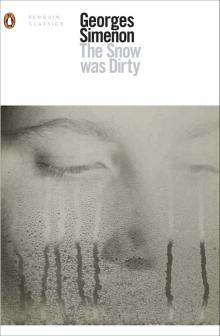 The Snow Was Dirty
The Snow Was Dirty Maigret and the Tramp
Maigret and the Tramp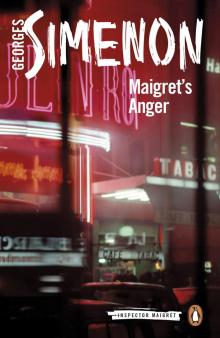 Maigret's Anger
Maigret's Anger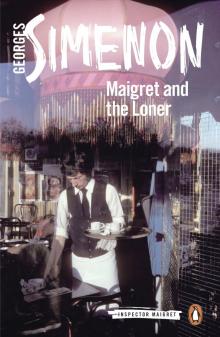 Maigret and the Loner
Maigret and the Loner The Krull House
The Krull House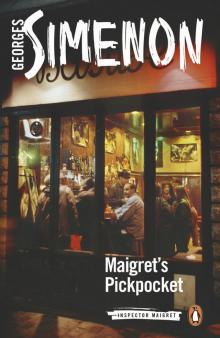 Maigret's Pickpocket
Maigret's Pickpocket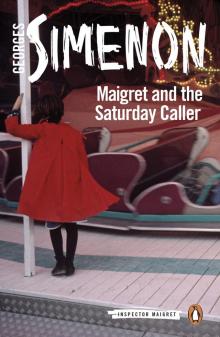 Maigret and the Saturday Caller
Maigret and the Saturday Caller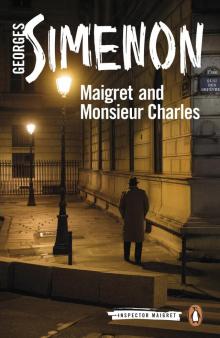 Maigret and Monsieur Charles
Maigret and Monsieur Charles Maigret Hesitates
Maigret Hesitates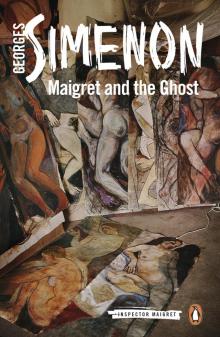 Maigret and the Ghost
Maigret and the Ghost Maigret and the Killer
Maigret and the Killer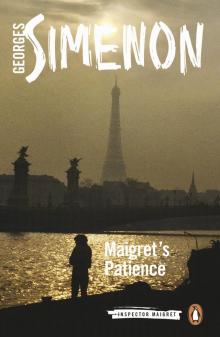 Maigret's Patience
Maigret's Patience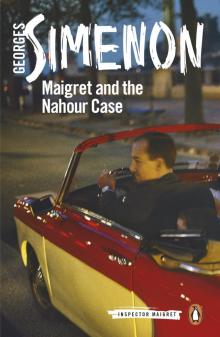 Maigret and the Nahour Case
Maigret and the Nahour Case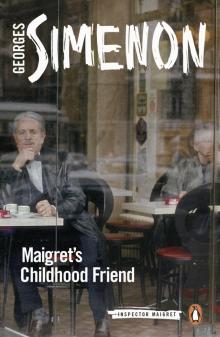 Maigret's Childhood Friend
Maigret's Childhood Friend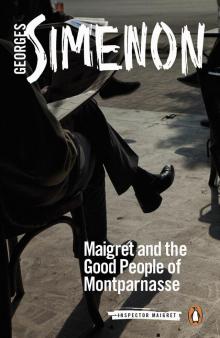 Maigret and the Good People of Montparnasse
Maigret and the Good People of Montparnasse Maigret and the Lazy Burglar
Maigret and the Lazy Burglar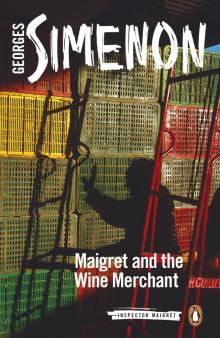 Maigret and the Wine Merchant
Maigret and the Wine Merchant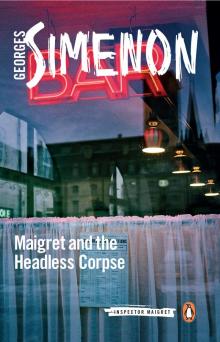 Maigret and the Headless Corpse
Maigret and the Headless Corpse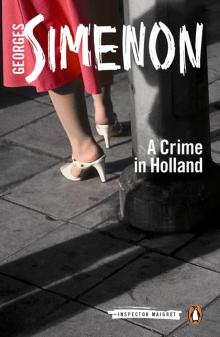 A Crime in Holland
A Crime in Holland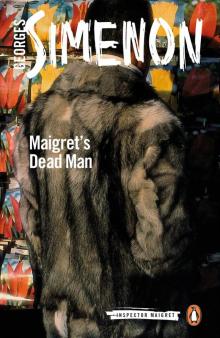 Maigret's Dead Man
Maigret's Dead Man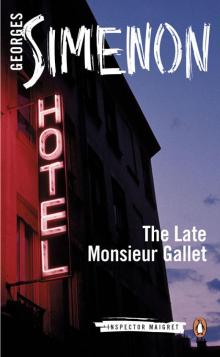 The Late Monsieur Gallet
The Late Monsieur Gallet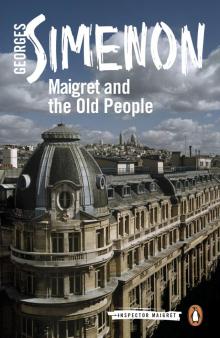 Maigret and the Old People
Maigret and the Old People Maigret's Holiday
Maigret's Holiday Liberty Bar
Liberty Bar The Misty Harbour
The Misty Harbour The Madman of Bergerac
The Madman of Bergerac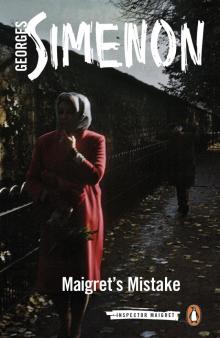 Maigret's Mistake
Maigret's Mistake Maigret's Madwoman
Maigret's Madwoman Monsieur Monde Vanishes
Monsieur Monde Vanishes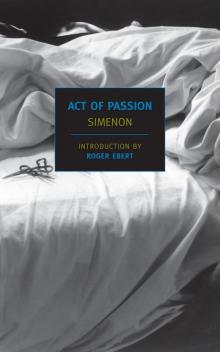 Act of Passion
Act of Passion The Two-Penny Bar
The Two-Penny Bar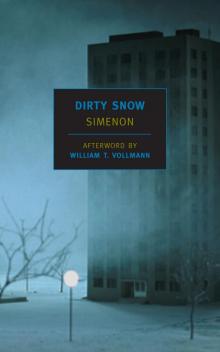 Dirty Snow
Dirty Snow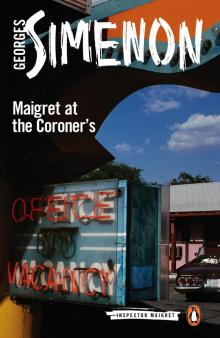 Maigret at the Coroner's
Maigret at the Coroner's Félicie
Félicie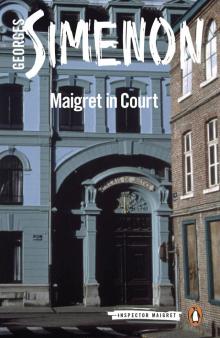 Maigret in Court
Maigret in Court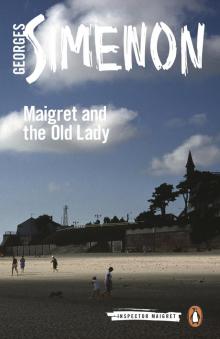 Maigret and the Old Lady
Maigret and the Old Lady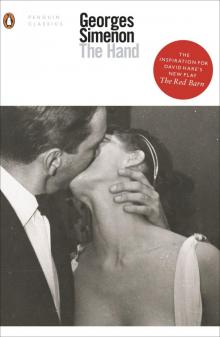 The Hand
The Hand The Little Man From Archangel
The Little Man From Archangel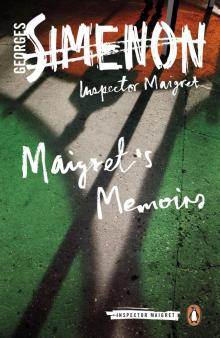 Maigret's Memoirs
Maigret's Memoirs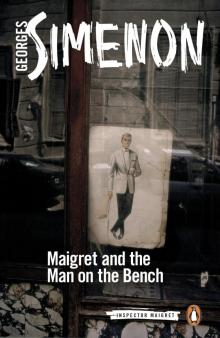 Maigret and the Man on the Bench
Maigret and the Man on the Bench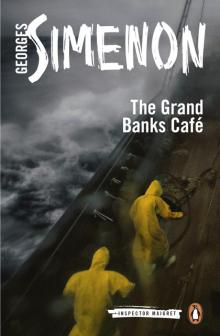 The Grand Banks Café
The Grand Banks Café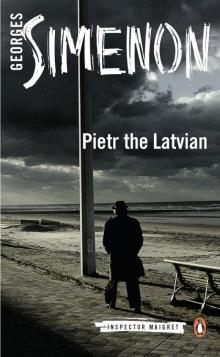 Pietr the Latvian
Pietr the Latvian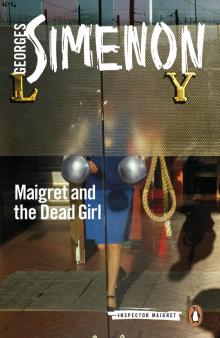 Maigret and the Dead Girl
Maigret and the Dead Girl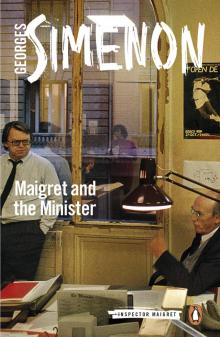 Maigret and the Minister
Maigret and the Minister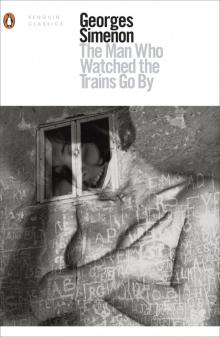 The Man Who Watched the Trains Go By
The Man Who Watched the Trains Go By Inspector Cadaver
Inspector Cadaver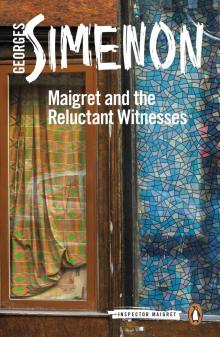 Maigret and the Reluctant Witnesses
Maigret and the Reluctant Witnesses Friend of Madame Maigret
Friend of Madame Maigret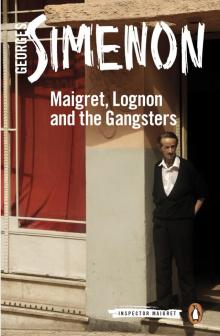 Maigret, Lognon and the Gangsters
Maigret, Lognon and the Gangsters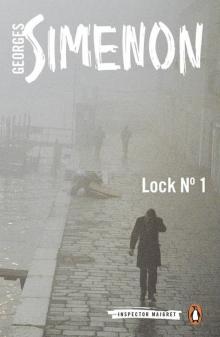 Lock No. 1
Lock No. 1 When I Was Old
When I Was Old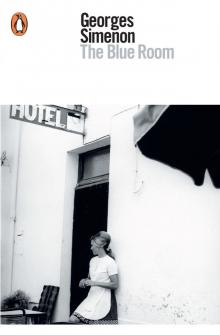 The Blue Room
The Blue Room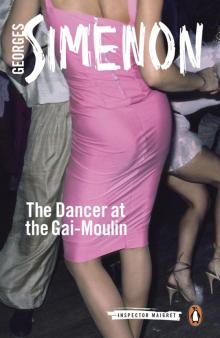 The Dancer at the Gai-Moulin
The Dancer at the Gai-Moulin The Train
The Train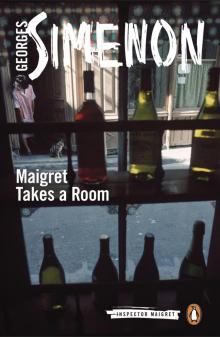 Maigret Takes a Room
Maigret Takes a Room Madame Maigret's Friend
Madame Maigret's Friend Maigret Enjoys Himself
Maigret Enjoys Himself Maigret and the Man on the Boulevard
Maigret and the Man on the Boulevard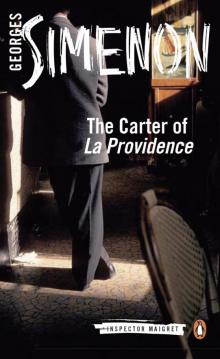 The Carter of ’La Providence’
The Carter of ’La Providence’ The President
The President The Cellars of the Majestic
The Cellars of the Majestic Maigret at Picratt's
Maigret at Picratt's Maigret 51 Maigret Travels
Maigret 51 Maigret Travels My Friend Maigret
My Friend Maigret Maigret
Maigret Maigret's Failure
Maigret's Failure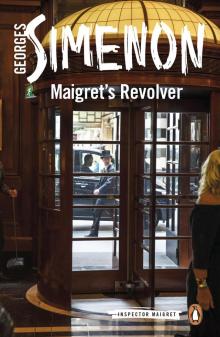 Maigret's Revolver
Maigret's Revolver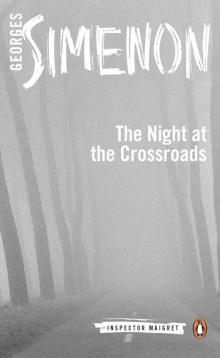 The Night at the Crossroads
The Night at the Crossroads The Flemish House
The Flemish House Maigret Gets Angry
Maigret Gets Angry Maigret's Doubts
Maigret's Doubts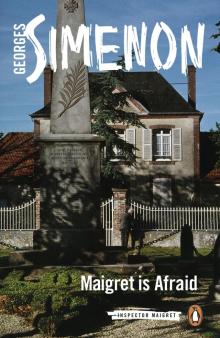 Maigret is Afraid
Maigret is Afraid Maigret Travels
Maigret Travels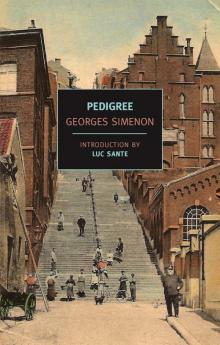 Pedigree
Pedigree Maigret's Secret
Maigret's Secret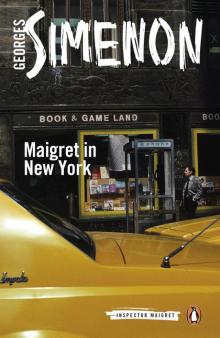 Maigret in New York
Maigret in New York Maigret's Doubts (Inspector Maigret)
Maigret's Doubts (Inspector Maigret) Sunday
Sunday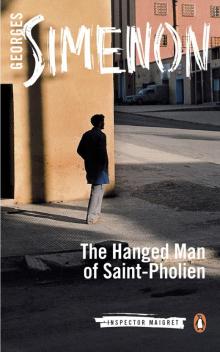 The Hanged Man of Saint-Pholien
The Hanged Man of Saint-Pholien The Yellow Dog
The Yellow Dog Three Bedrooms in Manhattan
Three Bedrooms in Manhattan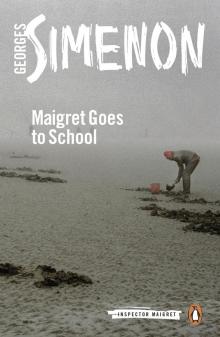 Maigret Goes to School
Maigret Goes to School Three Bedrooms in Manhattan (New York Review Books Classics)
Three Bedrooms in Manhattan (New York Review Books Classics) The Hotel Majestic
The Hotel Majestic Maigret and the Tall Woman
Maigret and the Tall Woman The Judge's House
The Judge's House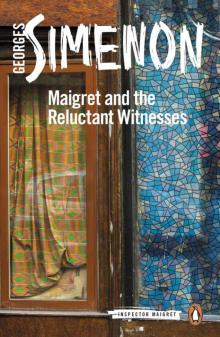 Maigret 53 Maigret and the Reluctant Witnesses
Maigret 53 Maigret and the Reluctant Witnesses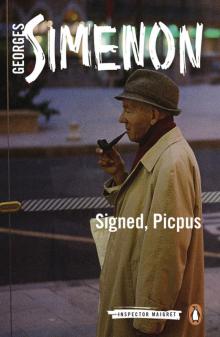 Signed, Picpus
Signed, Picpus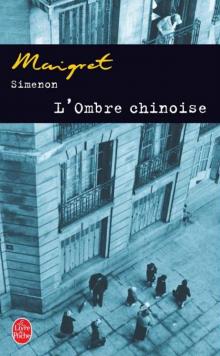 Maigret: The Shadow in the Courtyard (1987)
Maigret: The Shadow in the Courtyard (1987)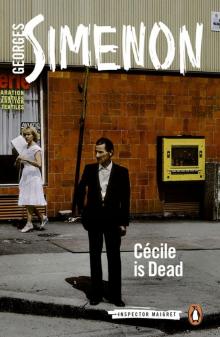 Cécile is Dead
Cécile is Dead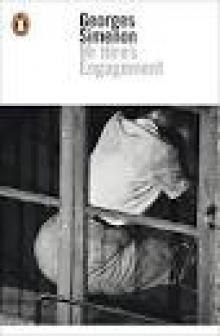 Mr Hire's Engagement
Mr Hire's Engagement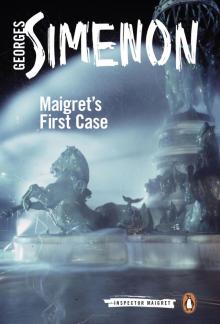 Maigret's First Case
Maigret's First Case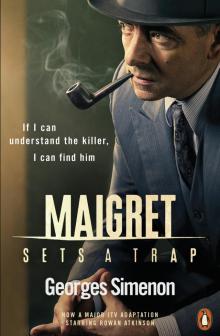 Maigret Sets a Trap
Maigret Sets a Trap